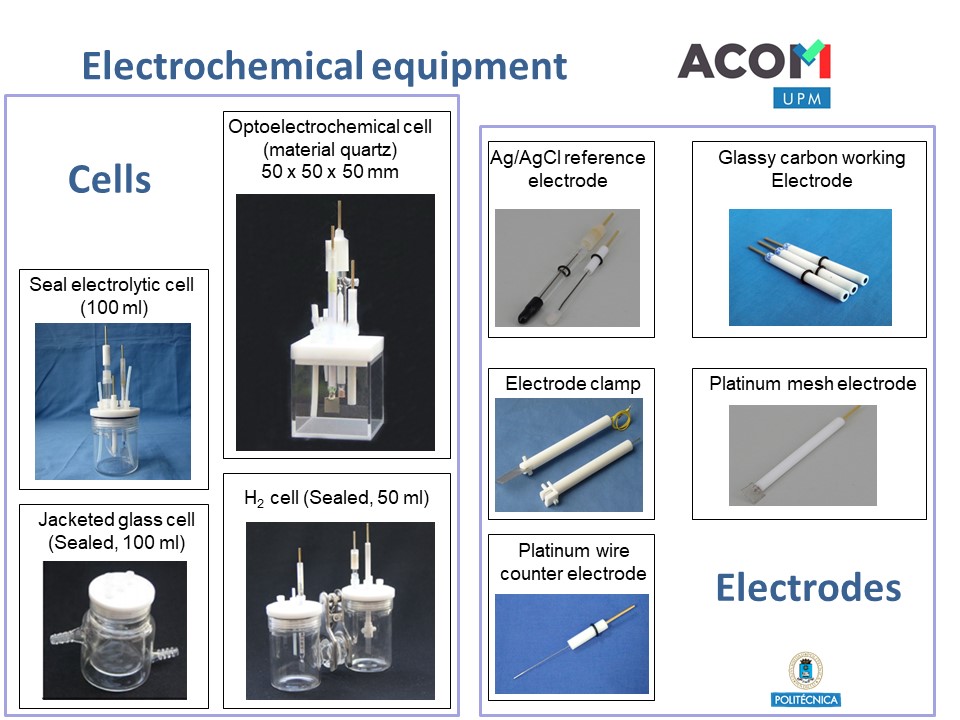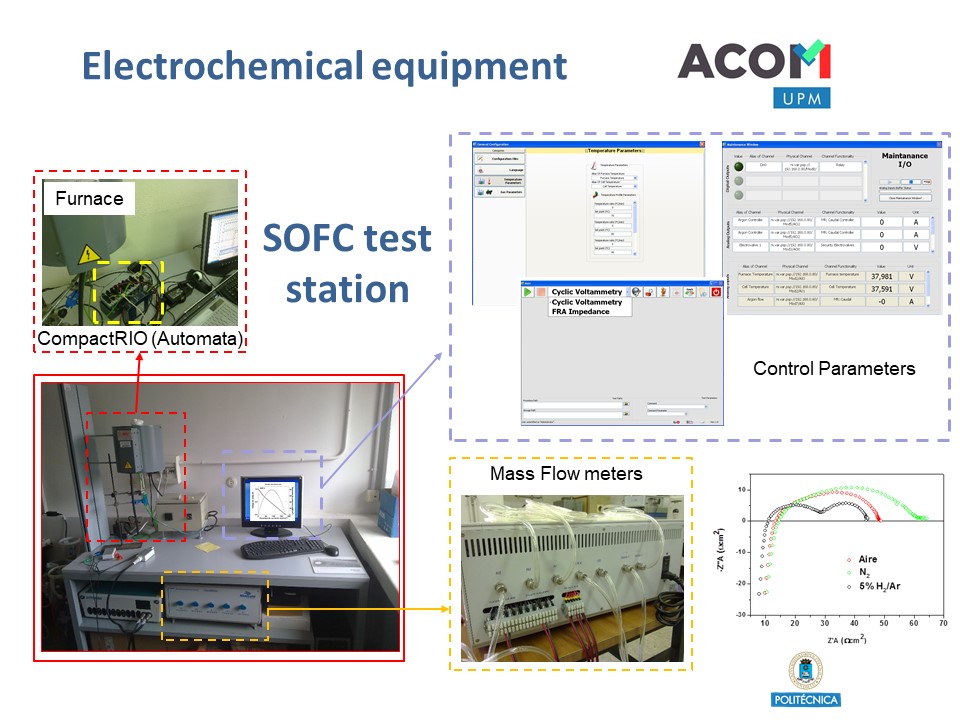



– Materials synthesis laboratory: the ACOM group has several furnaces and laboratory ovens for the synthesis of the proposed materials, able to work in air and other atmospheres from room temperature to 1700°C. The group has also a complete set of Teflon-lined stainless-steel autoclaves devoted to the preparation of nanoparticles by solvothermal synthesis.
–Structural and microstructural characterization: Concerning the structural characterization of the obtained solids, we have an X-ray Siemens D5000 diffractometer equipped with a spinner and a sample charge station allowing to measure up to 40 specimens. The thermal stability of the compounds will be studied by ATG/ATD/DSC technique in a SDT Q600 thermogravimetric analysis equipment working at different dynamic atmospheres (He, N2, O2, H2/N2, H2S/N2 and air). Further structural and microstructural characterization will be performed at XRD CAI and ICTS National Center for Electron Microscopy, respectively.
–Characterization of material properties: the group has built for several decades a singular laboratory devoted to the optical characterization of materials. Among other techniques, the members of the group have been working for some time in FTIR, UV-Vis and RAMAN spectroscopies. For these purposes, we have an UV-Vis UVIKON spectrometer, a Kr/Ar laser Spectra-Physics equipped with two Raman probe (488 and 514 nm), a Perkin-Elmer λ-900 to measure from UV to Near Infrared Reflectance spectra (190-3000 nm), a LUCI-100 industrial colorimeter, a Spectrofluorometer Fluorolog 3 equipped with a pulsed and continuous Xe lamps and phosphorescence detector (10 µs to 10 second acquisition time) for phosphorescence measurements at room temperature and at 77 K and three different IR instruments: the first, a Perkin-Elmer GX-2000 equipped with accessories to measure total, specular and diffuse reflectance; the second, a Perkin-Elmer Frontier equipped with two beam splitter (KBr an Polyethylene) 8300 cm-1 to 30 cm-1 range and finally, a Nicolet iS50 FTIR-Thermo Scientific for special requirements of low detection limits of organic pollutants. Furthermore, the ACOM group has a Methrom 746 VA Trace Analyzer voltamperometer and an atomic absorption spectrometer Thermo Scientific iCE 3000 Series for the determination of cations coming from a possible leaching of the nanoparticles used in the photocatalysist experiments. Some of these experiments will be performed in a Photolab LED365-32a photo-electro-catalytic reactor made specially by APRIA systems for our laboratory. Qualitative and quantitative analysis of the pollutants will be performed by HPLC in a Jasco MD-2010/2015 equipped with a capillary column C18, 4.6 mm×250 mm×5 μm. To study catalytic properties of synthetized materials we have a Micromeritics TPD/TPR 2900. Our group has also access to the LIMIT laboratory, located at ETSIDI-UPM, for the use of an XRF Bruker S2Puma and two environmental test chambers, Discovery DY1200 and Weiss WKL, for ageing studies of copolymer-block electrodes under different temperatures and UV radiation.

